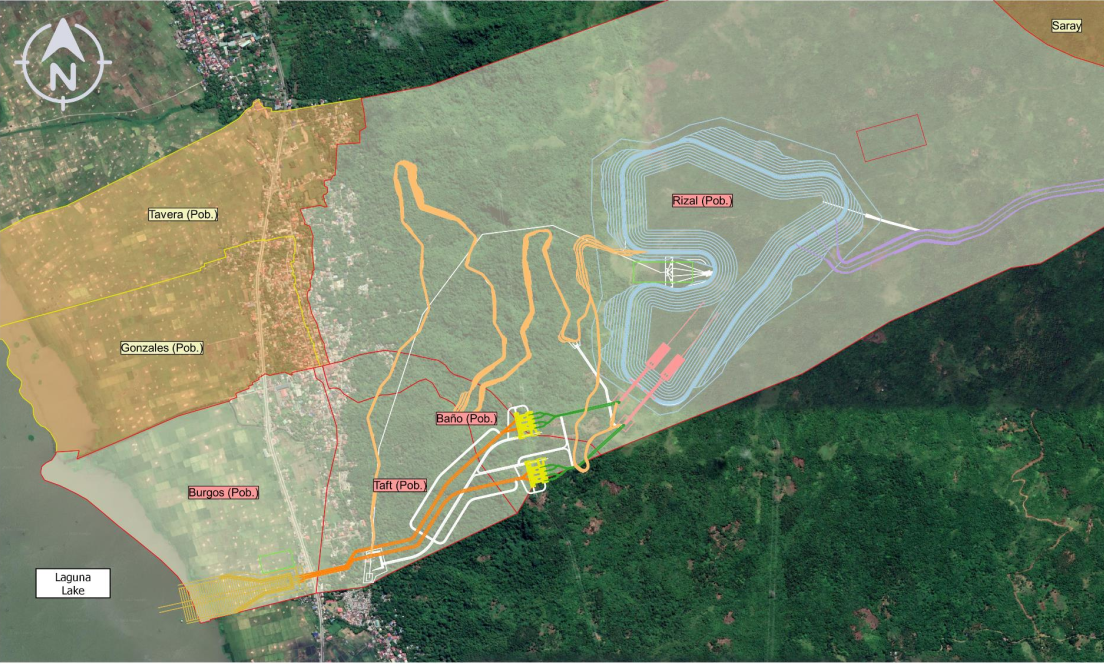The leadership of the Catholic Church in Laguna province has joined the growing number of voices opposed to the construction of a hydropower project in Pakil, Laguna.
In an interview with Catholic radio station Radio Veritas, Danilo Francisco, chairman of the Committee on Justice and Peace and Integral Ecology of Laguna Economical Movement of the Diocese of San Pablo, warned that the proposed 1400-megawatt Ahunan Pumped-Storage Hydropower Project can have serious impacts on the environment and livelihood of Pakil's residents.
"Hindi lamang ito usapin ng bundok, kasi sa Pakil, ang bundok na iyon ay bundok ng mga deboto," Francisco was quoted as saying.
During the interview, Francisco noted that the construction of the dam can also affect long-standing traditions held by Pakileños, especially during Holy Week.
According to a 2022 report by the Center of Environmental Concerns, the Ahunan Pumped-Storage Hydropower Plant will be located at the site of the annual "Ahunan," a tradition where people hike to the top of the mountain and to the water source which is believed to have healing powers.
"Mayroon doong taunang tradisyon na kung saan ang mga deboto ay umaakyat sa bundok na may pasan-pasan na krus at itinitirik nila sa bundok, para ang mga deboto ay makasama ang kalikasan at makita ang mukha ng Diyos sa Kaniyang nilikha,” he added.
Last March, San Pablo Archbishop Marcelino Antonio Maralit also urged the Department of Energy, Ahunan Power Inc., and Department of Environment and Natural Resources to review the project and conduct genuine public consultations, citing the project's potential consequences to the environment in the area.
Local opposition
The Ahunan Pumped-Storage Hydropower Project is a large-scale pumped-storage hydropower project consisting of a large reservoir and pumps that will be constructed in the barangays of Burgos, Taft, Baño and Rizal.
Under the scheme, which is expected to become fully operational by 2027, the upper reservoir will receive water from the Laguna de Bay, which had been designated as the lower reservoir.
During periods of high electricity demand, power will be generated by releasing the stored water through turbines in the same manner as a conventional hydropower station, while during periods of low demand, the upper reservoir will be recharged by using lower-cost electricity from the grid to pump the water back to the upper reservoir.
Residents and concerned groups have long voiced their opposition to the P1.1-billion project, citing potential effects on nearby communities.
Among other concerns, locals worry that the construction of the dam will render Pakil more vulnerable to the effects of flooding during the rainy season, as a 300-hectare portion of the town's mountainous hinterlands are slated to be utilized for the reservoir.
Last July 9, Ang Hinirang, a local community news portal, alleged that over 3,772 trees are now slated to be cut down in the barangays of Rizal and Baño by 2026, purportedly as part of the construction of the hydropower project.
#WeTakeAStand #OpinYon #OpinYonNews
